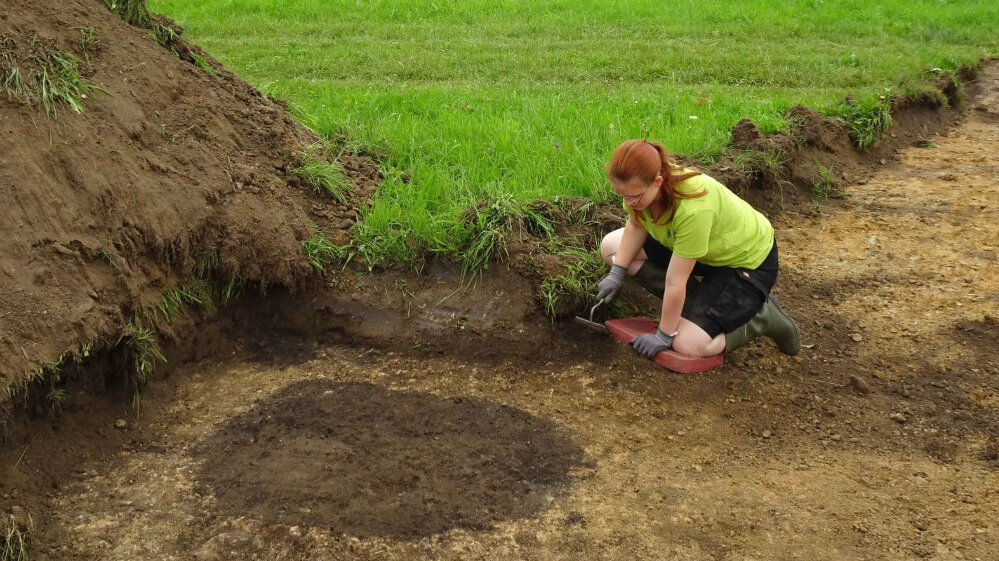The energy transition requires the expansion of new overland power lines to cover the increasing energy demand. Amprion GmbH is currently planning the section of a supra-regional route in Siegerland that envisages the construction of larger high-voltage pylons. Appropriate foundations are required for the erection of these masts. This step called the archaeologists of the Regional Association of Westphalia Lippe (LWL) into action. During their investigations, they came across the remains of pit piles used to make charcoal.
The Siegerland region is a historical treasure trove that goes back to the late Paleolithic and is home to particularly rich archaeological traces. The Mesolithic Age, the Iron Age and the remains of medieval settlements are well documented here, according to Professor Dr. Michael Baales, Head of LWL Archeology for Westphalia, Olpe branch.
The LWL Archeology for Westphalia, Olpe branch, received an early insight into the current plans. This cooperation made it possible to carry out necessary archaeological measures at the new sites in the vicinity of known sites.
Archaeological investigations began on July 10th. At three new pylon locations near Siegen-Oberschelden in the Siegen-Wittgenstein district, the researchers removed the topsoil using an excavator in order to analyze the soil conditions. In doing so, they encountered black spots heavily containing charcoal in the light subsoil at mast 400 west of Oberschelden. One patch was about a meter in diameter and showed slightly bricked edges. These finds quickly turned out to be the remains of pit piles in which charcoal was once produced for domestic iron or non-ferrous metal production. The large square markers, which later became known in Siegerland and can still be seen today in Netphen-Walpersdorf, only became prominent later.
dr Eva Cichy, head of the excavation, explained that pit piles were widespread at least until the late Middle Ages and in some cases pottery sherds were found in South Westphalia, which enable dating. Since this is not the case in Oberschelden, the team plans to radiocarbon date some of the pieces of charcoal to determine their exact age.
The pit kilns were essential for the production of charcoal, the most energetic fuel of this era. The medieval charcoal burners first dug simple pits in the ground, piled in wood and covered it with sod and earth. In the case of round pit piles, they probably left a shaft free in the middle into which glowing charcoal was poured to start the pile-up process. At around 300 degrees Celsius, the moisture was expelled from the wood and the wood was converted into almost pure carbon (pyrolysis). The whole process took about a day.
The previously unknown Köhlerplatz near Oberschelden was most recently a meadow that had previously been used as farmland, as the uncovered flight tracks showed. Since pit piles are hardly recognizable in the terrain today, they can only be brought to light through careful archaeological monitoring of construction projects.
